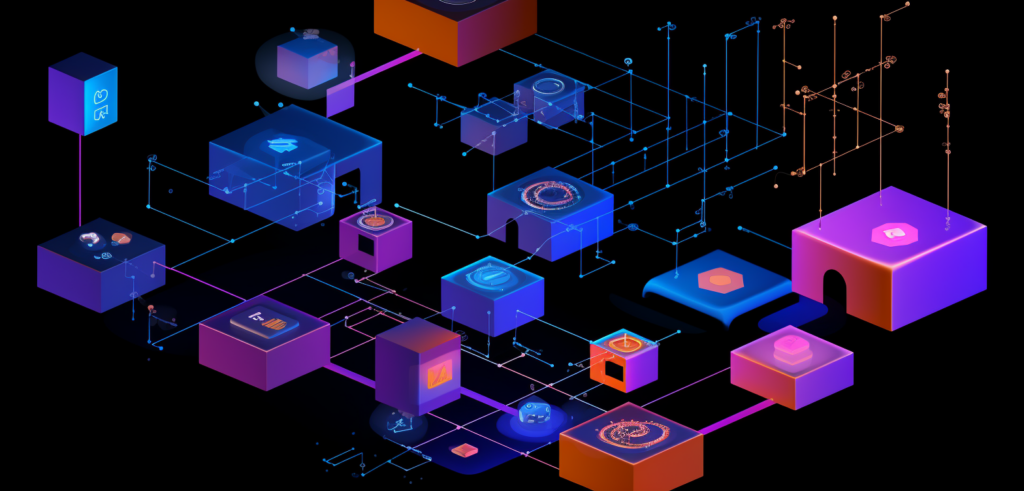Introduction
Azure Kubernetes Service (AKS) streamlines container orchestration for businesses. Yet, with rising cyber threats, ensuring security in multi-tenant AKS clusters is critical. Enter microsegmentation: not just a network-centric strategy, but a holistic approach encompassing observability, secret management, CI/CD, and identity access. In this guide, we explore the multifaceted world of AKS microsegmentation, making it a must-read for professionals keen on fortifying their AKS setups.

1. Understanding the Basics
Microsegmentation, in its essence, is a security practice designed to partition a larger environment into smaller, isolated segments. But why is it becoming increasingly important, especially in the Kubernetes realm?
- Granular Security: In traditional networks, once an intruder gains access, they often have free reign across the system. Microsegmentation, by contrast, limits their movement, containing potential breaches to a specific segment.
- Why Kubernetes?: Kubernetes manages clusters of containerized applications. While it inherently promotes decoupling and modular architecture, its dynamic nature demands a security approach that can keep pace. This is where microsegmentation fits perfectly. It ensures that even if one pod or service is compromised, the breach doesn’t spill over to others.
- AKS and Microsegmentation: Azure Kubernetes Service (AKS) takes Kubernetes to the cloud, offering a managed service that simplifies deployment and scaling. In multi-tenant AKS scenarios, where multiple entities share the same cluster resources, the stakes are even higher. Imagine multiple businesses operating on a single AKS cluster; the ripple effect of a security breach could be catastrophic. Microsegmentation becomes not just advisable but essential.
- Beyond Network: While the network is a primary focus, microsegmentation in AKS extends beyond it. It touches upon aspects like observability, secret management, and more, ensuring a holistic security strategy.
In the subsequent sections, we will dive deeper into how microsegmentation impacts and enhances various facets of AKS deployments, and why it should be a cornerstone of your Kubernetes security strategy.
2. Network Microsegmentation in AKS
The heart of any Kubernetes cluster is its ability to orchestrate and manage a network of containers seamlessly. However, this interconnectedness, if not managed carefully, can become a vulnerability. Network microsegmentation aims to secure these connections, adding layers of security to the inherent agility of AKS.

- The Essence of Network Policies in Kubernetes: By default, Kubernetes allows all pods to communicate with each other. Network policies enable administrators to dictate precisely which pods can communicate, establishing allowed connections and blocking everything else. It’s a white-listing approach: unless explicitly permitted, communication paths are blocked.
- Calico & NeuVector in the AKS Landscape: Both are pivotal players in enhancing AKS’s microsegmentation capabilities.
- Calico: As a popular network and network policy provider for Kubernetes, Calico offers scalable and high-performance networking with robust network segmentation capabilities.
- NeuVector: Going a step beyond, NeuVector provides a security solution that automates the creation of dynamic network policies based on observed traffic patterns, essentially “learning” the typical communication paths and suggesting policies to reinforce them.
- The Multi-tenant Challenge: In multi-tenant AKS setups, defining boundaries becomes trickier. Each tenant may have unique networking needs, and ensuring that one tenant’s workloads can’t communicate with another’s (unless explicitly allowed) is crucial. This is where the true power of microsegmentation shines, allowing tailored network configurations for each tenant while ensuring overarching security.
- Network Microsegmentation in Practice: Implementing microsegmentation in AKS involves:
- Auditing: Understanding existing network traffic and identifying legitimate communication paths.
- Policy Creation: Defining policies that permit these paths while denying others.
- Continuous Monitoring: The dynamic nature of Kubernetes means that allowed communication paths today might not be valid tomorrow. Continuous monitoring ensures policies remain relevant and security is upheld.
By segmenting the network within AKS, organizations not only minimize the potential attack surface but also add depth to their defense strategy, ensuring that a breach in one segment doesn’t automatically mean a system-wide compromise.
3. Monitoring and Observability
Ensuring that a Kubernetes environment remains secure requires more than just setting up protective barriers. It necessitates a keen insight into the activities within the cluster. This is where monitoring and observability come into play, offering the eyes and ears needed to ensure the continued effectiveness of our microsegmentation strategies.

- The Difference Between Monitoring and Observability: While these terms are often used interchangeably, they serve different purposes. Monitoring is about keeping an eye on known issues, using predefined metrics and thresholds. Observability, on the other hand, provides insights into system behavior, helping diagnose and explore unknown issues.
- Logging with logging-operator: An essential component of observability, the logging-operator simplifies the process of collecting, processing, and forwarding logs in a Kubernetes environment. Properly configured logging can help detect unauthorized access attempts or policy violations, providing an early warning system for potential breaches.
- Metrics and Traces: Metrics provide quantitative data about system performance, while traces offer insight into how data and requests flow through the system. Together, they create a comprehensive picture of cluster health and activity. In the context of microsegmentation, they can reveal unauthorized data paths or potential misconfigurations.
- The Role of Observability in Microsegmentation: By gaining a deeper understanding of the cluster’s workings, observability tools can highlight anomalies or deviations from the norm. For instance, an unexpected communication between pods could signal a misconfigured network policy or even a potential breach.
- Alerting and Incident Response: While observability provides insights, the real value comes from acting on those insights. Setting up alerts for unusual activities ensures that any deviations from the expected behavior are promptly addressed, reinforcing the microsegmentation strategies in place.
- Continuous Feedback Loop: Microsegmentation is not a “set it and forget it” strategy. With the dynamic nature of AKS environments, the established boundaries and policies may need adjustments. Observability provides the feedback required to refine and update these policies, ensuring they remain relevant and effective.
In essence, monitoring and observability serve as the guardians of microsegmentation, continuously validating its effectiveness and highlighting areas for improvement. They ensure that the finely tuned boundaries set by microsegmentation are always upheld and adapted to the evolving landscape of AKS.
4. Secret Management
Secrets, such as API keys, tokens, and passwords, are the lifeblood of many applications running in AKS. Their proper management is crucial not only for the application’s functionality but also for maintaining the security and integrity of the entire cluster.

- The Challenge: In a dynamic AKS environment, where pods are continuously created and destroyed, securely passing secrets becomes a challenge. In multi-tenant clusters, this complexity is further compounded. One tenant’s secrets must never be accessible to another.
- Storing Secrets: Kubernetes has a built-in object type called Secret to handle sensitive data. However, storing secrets in plain text, even within a Secret object, can be risky. Encryption at rest and in transit becomes essential.
- external-secrets in AKS: external-secrets bridges the gap between AKS and external secret management systems, such as Azure Key Vault. It allows Kubernetes to fetch secrets from these external sources, ensuring that sensitive data doesn’t reside within the cluster longer than necessary and is stored securely.
- Dynamic Secret Rotation: With the possibility of secrets being exposed or becoming stale, periodic rotation is essential. Integrating with tools that support dynamic secret generation and rotation ensures that even if a secret is compromised, its lifespan is limited.
- Microsegmentation’s Role: As with network policies, microsegmentation strategies can be extended to secret management. By ensuring that secrets are accessible only by the specific pods or namespaces that require them, you limit the potential damage of a compromised secret.
- Auditing and Monitoring: Monitoring access to secrets, coupled with alerts for unexpected access patterns, can provide early warning signs of potential breaches. It’s not just about managing secrets but also being observant about their usage.
In conclusion, secret management in AKS is a multifaceted challenge, especially in multi-tenant environments. While tools like external-secrets simplify the task, integrating secret management into your overall microsegmentation strategy ensures a robust and secure AKS deployment.
5. CI/CD in the Context of Microsegmentation
The CI/CD pipeline plays a crucial role in the modern application deployment landscape, seamlessly transitioning code from development to production. In AKS, the dynamics of this pipeline can have profound implications for microsegmentation.

- Dynamic Environments and Network Policies: With the continuous deployment of new services or scaling of existing ones, network communication paths can evolve. It’s vital for the CI/CD process to update network policies correspondingly, ensuring they match the evolving state without introducing security gaps.
- Incorporating Security Checks: Integrate security scans and policy compliance checks into the CI/CD pipeline. This approach guarantees that no application or service is deployed with configurations that might breach the set microsegmentation parameters.
- ArgoCD and GitOps: ArgoCD exemplifies the GitOps paradigm within Kubernetes. This model treats Git as the source of truth for declarative infrastructure and applications. Any change in the Git repository triggers a deployment to align the cluster with the new state.
- Example: Consider a scenario where a new microservice is added to an application. The development team makes a pull request with the new service’s configuration and network policies. Upon review and merging, ArgoCD detects the change and initiates a deployment. If the network policies inadvertently allow broader access than necessary, the security team can create a new pull request to refine the policies, ensuring they align with microsegmentation principles. Every change is version-controlled, traceable, and can be audited, guaranteeing transparency and accountability.
- Ensuring Multi-tenant Isolation: In a multi-tenant AKS setup, CI/CD processes for one tenant must be insulated from others. This requires making sure that deployments or updates respect tenant boundaries and that microsegmentation rules remain enforced even through service evolutions.
- Feedback Loop and Adjustments: The CI/CD pipeline is a valuable source of feedback on microsegmentation’s effectiveness. Policy restrictions causing deployment failures, for instance, can signal necessary policy tweaks or highlight genuine security concerns that need addressing.
In summary, the intertwined relationship between CI/CD processes and microsegmentation ensures that the AKS environment remains secure, even in the face of rapid development and deployment cycles.
6. Integrating Identity and Access Management (IAM)
Identity and Access Management (IAM) in AKS ensures that only authenticated and authorized entities can access and interact with the cluster and its resources. When coupled with microsegmentation, IAM adds a robust layer of security that defines not just what can communicate, but also who can initiate or manage that communication.

- AKS and Azure AD Integration: Azure Active Directory (Azure AD) serves as Microsoft’s cloud-based identity solution. Its integration with AKS means cluster administrators can utilize Azure AD identities for user authentication, ensuring that access to the AKS cluster is restricted to users with the correct Azure AD credentials.
- Role Binding with AAD Groups: Azure AD’s group functionality allows the clustering of users under specific roles or responsibilities. By integrating AKS with Azure AD, administrators can bind Kubernetes roles and cluster roles to Azure AD groups. This means that when a user belonging to a specific Azure AD group logs in, they are automatically assigned the roles and permissions associated with that group in AKS. This simplifies access management, allowing for easier onboarding, offboarding, and access adjustments. Instead of individually assigning permissions to users, they are managed at the group level, streamlining administrative tasks and reinforcing the principle of least privilege through group-based access controls.
- Kubernetes RBAC: Role-Based Access Control (RBAC) in Kubernetes defines who can do what within the cluster. For instance, while some users might have permission to create pods in a namespace, others might only have read access. This granularity ensures that users and services operate within their least privilege, reducing the risk of inadvertent or malicious changes that might disrupt microsegmentation rules.
- IAM in Multi-tenant Clusters: In multi-tenant AKS environments, segregating tenant access is crucial. Each tenant should have access only to their resources and not interfere with others. Integrating IAM ensures that tenants remain isolated, with their actions and access confined to their allocated resources.
- Pod Identity: An extension of IAM, Pod Identity assigns managed identities to pods, allowing them to authenticate to cloud services without storing credentials in the application. This reduces the risk of credential exposure while maintaining the principles of microsegmentation.
- IAM Auditing and Logging: Monitoring IAM access patterns is essential. Any unusual access pattern, like an unexpected spike in login attempts or access requests from unauthorized users, can signal potential security concerns. Integrating IAM logs with the AKS observability stack can provide real-time alerts and insights into these anomalies.
- Continuous Review and Adaptation: As with other aspects of AKS, IAM policies and configurations aren’t static. Regular reviews, coupled with feedback from monitoring and auditing tools, can help refine IAM policies to adapt to changing organizational needs while upholding microsegmentation principles.
In conclusion, IAM is the gatekeeper for AKS, ensuring that both human users and automated processes access resources in a controlled, audited manner. When integrated with microsegmentation, IAM enhances the security profile of the AKS cluster, making it resilient to both internal and external threats.
7. Kubernetes Role-Based Access Control (RBAC)

- Kubernetes RBAC is a critical component that provides granular access controls, determining who can do what within the cluster. In an environment as dynamic and complex as AKS, especially in multi-tenant setups, RBAC is indispensable in maintaining order, security, and operational integrity.
- Kubernetes RBAC is a critical component that provides granular access controls, determining who can do what within the cluster. In an environment as dynamic and complex as AKS, especially in multi-tenant setups, RBAC is indispensable in maintaining order, security, and operational integrity.
- RBAC Basics: In Kubernetes, RBAC allows administrators to define who (subjects like users, groups, or service accounts) can perform which actions (verbs like get, list, create) on which resources (such as pods, services, or secrets). These are primarily defined using Role and ClusterRole objects.
- Namespaced vs. Cluster-wide: While Role and RoleBinding are namespaced and control access within a specific namespace, ClusterRole and ClusterRoleBinding are cluster-wide. This differentiation is particularly vital in multi-tenant AKS clusters, ensuring tenants can be given specific rights within their namespaces without affecting the broader cluster.
- Integration with Azure AD: As discussed earlier, AKS’s integration with Azure AD allows tying Kubernetes roles directly to Azure AD groups. With RBAC, when a user from a specific Azure AD group accesses the cluster, their actions are dictated by the permissions granted to that group’s associated roles in AKS.
- Best Practices:
- Principle of Least Privilege: Always assign the minimum necessary permissions to users and applications. This reduces the potential damage in case of accidental or malicious actions.
- Regular Audits: With the evolving nature of applications and teams, regularly reviewing and updating RBAC rules ensures they remain relevant and secure.
- Use Role Aggregation: ClusterRoles can be set to aggregate rules from other ClusterRoles, making management more modular and less repetitive.
- Monitoring and Logging: Keeping an eye on RBAC-related activities, like permission changes or unusual access patterns, is crucial. Logging these actions and integrating with the AKS observability stack can offer insights into potential security threats or misconfigurations.
- RBAC in Microsegmentation: In the broader context of microsegmentation, RBAC complements network policies. While network microsegmentation controls traffic between pods, services, or nodes, RBAC defines who can control or access these resources. Both are crucial for a holistic security posture.
In conclusion, Kubernetes RBAC in AKS offers a robust mechanism to fine-tune and enforce access controls, ensuring that resources remain secure, and operations run smoothly. Its flexibility and granularity make it a cornerstone of AKS security, especially when combined with other tools and practices like microsegmentation.
Conclusion
Microsegmentation in the context of Azure Kubernetes Service (AKS) represents more than just a security measure; it’s a fundamental paradigm shift in how we approach and envision application and data integrity in dynamic, cloud-native environments. By partitioning our digital ecosystems into distinct segments, we achieve granular control, enhanced security, and optimized operational efficiency.
The marriage of AKS’s flexible orchestration capabilities with microsegmentation offers businesses a robust framework to address not just current security and operational challenges but to anticipate and prepare for future ones. As we’ve explored in our journey from the basics to real-world applications, AKS’s integration with tools like Azure AD, RBAC, and CI/CD processes elevates microsegmentation from a theoretical concept to an actionable, tangible asset.
In an age where digital threats are increasingly sophisticated and pervasive, the integration of AKS and microsegmentation becomes not just desirable, but imperative. As businesses and applications continue to evolve, so must our strategies to protect, optimize, and grow them. Microsegmentation in AKS offers a roadmap to such a future, ensuring that our digital landscapes are not only resilient but also poised for innovation and expansion.
